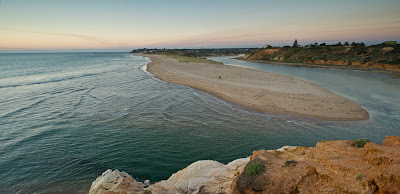 |
| and yes this was shot RAW... |
Recently my business partner and I have been wearing a T-shirt in the shop on occasion with the slogan "I Shoot RAW" proudly displayed on the front (this is courtesy of another interesting personality & talent I follow online, Jared Polin, who is more commonly known as "Fro Knows Photo"). It has been an entertaining experience gauging what sort of response we get from our customers, and other people in our shopping centre we meet whilst wearing these... needless to say, we have received many a strange look as well as some clever comments which generally have nothing to do with photography, but hey, as long as it brings a smile it's all good.
The RAW versus JPEG argument has to be one of the most widely discussed topics in photography these days, with countless opinions on what is best. Most, unfortunately are based on misinformation or just plain old ignorance, and surprisingly it's more often the professionals rather than the hobbyists that I have spoken to over the last few years that are the ones falling into the second category.
Here's my two cents:
This will mean more to those who have shot film... I liken shooting RAW format images to using the best possible film for the job along with having it processed at the best lab available.
Does this mean it will make a great image out of a crappy one? No - the photographer is still the most important cog in the whole process by a long shot, but it does mean that you are allowing your camera to capture an image with the maximum quality it possibly can. The biggest difference, is that a JPEG captures 255 tone steps from absolute white through to absolute black, whereas a RAW file captures between approximately 4000 & 16000 tone steps depending on whether your camera can capture a 12 or 14 bit image. This is the reason why you are able to recover many an off exposure if required, as well as produce much better tone gradations - especially noticeable in big enlargements. Essentially, unless there is a damn good reason, why would you choose to capture sub-standard images on the gear you have invested a lot of dollars in?
I have been able to save many an image for the pro clients I process work for when they have shot RAW. Again, I am not advocating that you should shoot RAW to make up for bad or sloppy photography, but it definitely can get you out of a jam... and life can choose to throw tests at the best of us whenever it chooses.
As well as the significant tone range difference, there are a few other components of digital photography that can benefit from shooting RAW. In camera sharpening and white balance are two things that can be set on your digital camera. If you shot RAW, you have the ability to change both those things if required, in your post processing software. Ideally, you should have set those things correctly when taking the shot - that's what good photographers generally do - but white balance can be a doozy sometimes, and if you are on the run jumping from daylight to tungsten to fluro... well, you can see how it could be an enormous advantage to be able to fine tune later if needed. Again, this ability has allowed me to save a number of photographers who have say, accidentally shot the good part of a wedding that was outside (daylight) with a tungsten white balance - you would not know once I had finished with the images. The same scenario in JPEG - find a good lawyer.
Now to be fair, shooting JPEG sometimes has it's advantages over RAW. JPEG's, having a smaller file size. They take up less memory, and can be captured and written faster - enabling faster frame rates for sports etc. Often sports shooters will do this as getting "the" shot with super fast frame rates is more important than RAW tone range. A job may require quick, easy and instant view-ability - which JPEG will provide (in many cases photographers shooting under these circumstances will shoot a RAW+JPEG to give them the best of both worlds). Other than those two situations though, in my opinion RAW wins every time.
So if you haven't delved into shooting RAW because you didn't understand the why's or wherefores, or because you've been told it's only for Pro's, give it a try. Most current computers should allow you to view your RAW files in their native viewing applications, and software like Photoshop, Lightroom, Aperture and iPhoto to name a few, will allow you to get the most out of your camera and out of your images.

